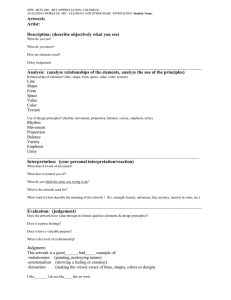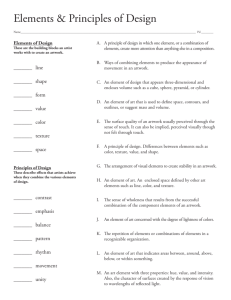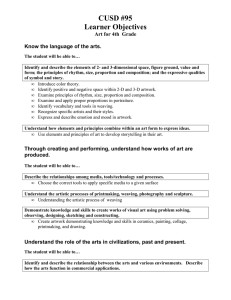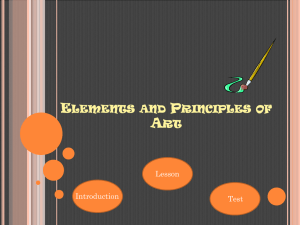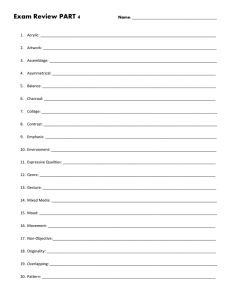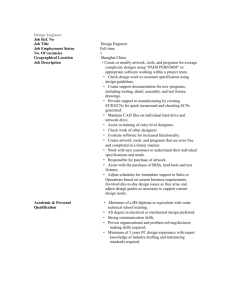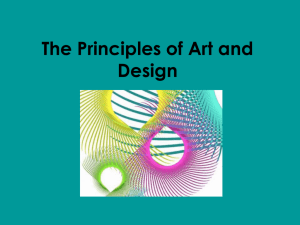Principles of Design
advertisement
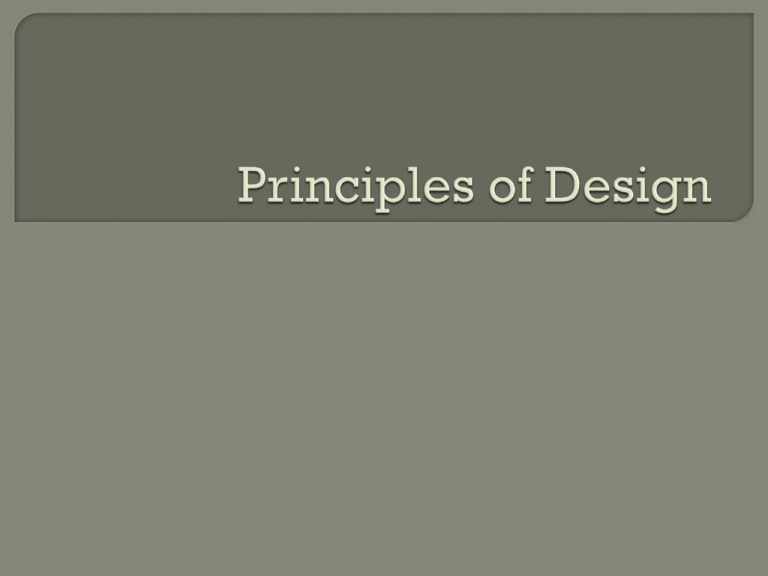
Unity Balance Variety Pattern Emphasis Proportion Rhythm Movement Unity in an artwork occurs when all elements work together to communicate ideas or feelings. Unity is affected by • Proximity (creating groups of objects) • Similarity (making objects or things similar to one another) • Continuation (creating a flow of vision from one object to another) Variety safeguards against too much of the same thing. A composition can be unified, but uninteresting due to a lack of variety. To avoid monotony, artists include different variations of elements to make the work interesting. Emphasis • the element or form that is the focal point of interest in a composition. On your paper, draw a rectangle at least 3 inches long. Now draw 5 different shapes, but make one shape the emphasis. What and how did you do it? Three methods for creating rhythm 1. By repeating the same element such as a shape or a figure 2. By repeating two more elements on an alternating basis such as circle/square, circle/square; or 3. By progression, in which an element gradually changes shape, size, position, or color John Biggers This concentrates with the illusion of movement that was made popular in the Op Art movement. These artist created art work that was graphically based that created a visual movement. Balance in art refers to the visual weight of an artwork. 4 types of balance: • Asymmetrical: • Symmetrical • Approximate symmetry • Radial Symmetry Patterns are the result from the repetition of elements or a combination of elements in a recognizable organization over the surface of an area or form. Proportion is the size relationship of parts to one another as a whole. What is achieved by introducing differences in the elements of a composition? What occurs when the visual weight in an artwork feels equally distributed? What is achieved when an artwork and all its elements work together to communicate ideas or feelings? What type of balance is used when elements are used equally on all sides? What occurs when one element in an artwork, or a combination of elements, attracts more attention than anything else in the composition? What principle of design suggests that things or objects are in motion or implied that they are in motion? What refers to the relative size of one part of a work to the other? What is created when specific elements (line or shape) are repeated or used in a certain progression.
